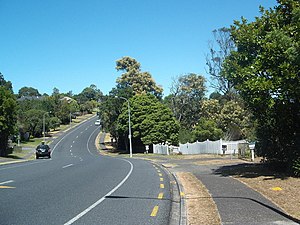
Epsom is a suburb of Auckland, New Zealand. It is located in the centre of the Auckland isthmus between Mount Eden and Greenlane, south of Newmarket, and 5 km (3.1 mi) south of the Auckland City Centre.

Mount Albert is an inner suburb of Auckland, New Zealand, which is centred on Ōwairaka / Mount Albert, a local volcanic peak which dominates the landscape. By 1911, growth in the area had increased to the point where Mount Albert was declared an independent borough, which was later absorbed into Auckland. The suburb is located 7 kilometres (4.3 mi) to the southwest of the Auckland City Centre.

Mount Roskill is a suburban area in the city of Auckland, New Zealand. It is named for the volcanic peak Puketāpapa.
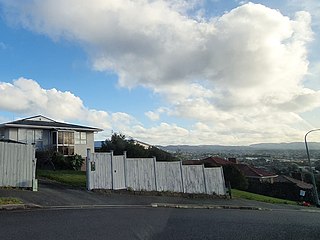
New Windsor, founded in 1865, is a suburb of Auckland, New Zealand. It is located 10 kilometres (6.2 mi) from the Auckland city centre, between Mount Albert, Blockhouse Bay, Mt Roskill and Avondale.

Waikōwhai is an Auckland suburb, under the local governance of the Auckland Council. Waikōwhai has the largest block of native forest left on the Auckland isthmus. The block was considered the too infertile for farming and subsequently not cleared but given to the Wesley Mission. Today the forest block hosts a valuable sample of Auckland's original fauna and flora. Waikōwhai Walkway extends for 10 km (6.2 mi) linking Onehunga to Lynfield Cove.
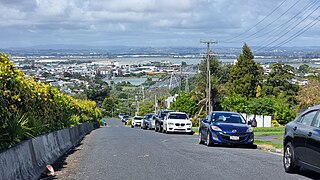
Hillsborough is a suburb of Auckland, New Zealand. It is under the local governance of the Auckland Council. Hillsborough is a leafy suburb of 20th-century houses. The area is serviced by two shopping areas; Onehunga and Three Kings. The area is served by secondary schools Mount Roskill Grammar School and Marcellin College.

Wesley is a suburb of Auckland, New Zealand, located in the south-west of the Auckland isthmus. The area is a part of the Oakley Creek catchment, and in the 19th and early 20th centuries was primarily swampland owned by the Weslayan Mission. The New Zealand Government developed Wesley as a state housing area in the 1940s and 1950s.

Waikowhai Intermediate School is a coeducational intermediate school located in Mount Roskill, Auckland, New Zealand. It serves the areas of Mount Roskill, Waikōwhai, Lynfield, Māngere Bridge and Blockhouse Bay. The current principal is David King.
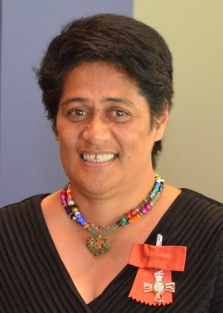
Rita Taimalietane Fatialofa-Patolo is a Samoan sportsperson who played netball and softball for New Zealand.

Lynfield College is a secondary education provider in Lynfield, Auckland, New Zealand. It celebrated its 50th anniversary in 2008.
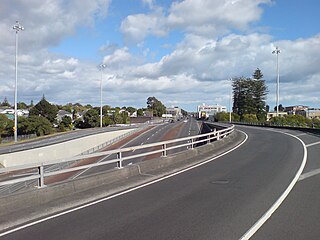
Dominion Road is an arterial road in Auckland, New Zealand, running north–south across most of the Auckland isthmus. It is a major public transport route that carries 50,000 bus passengers each week, making it one of the few roads in Auckland on which similar or greater numbers of people travel by public transport than by private car.
Iva Lewis Ropati is a New Zealand former professional rugby league footballer who played in the 1980s and 1990s, and high school principal. He played at representative level for New Zealand, Auckland and Taranaki, and at club level for the Otahuhu Leopards, the Te Atatu Roosters, the Mangere East Hawks, the Sheffield Eagles, Featherstone Rovers, Oldham, the Parramatta Eels, the Auckland Warriors and the Manurewa Marlins, as a centre.
Alex Metzger is a former association football player who represented New Zealand at international level.

Oakley Creek is a creek in Auckland, New Zealand. While heavily human-modified, it has a number of important ecological features, such as having the only natural waterfall on the Auckland isthmus.

The Puketāpapa Local Board is one of the 21 local boards of the Auckland Council, and is one of the two boards overseen by the council's Albert-Eden-Puketāpapa ward councilors.
Rachel Nash is a New Zealand actress who has appeared in many local films and television series over the years in New Zealand. She has had several guest roles in Shortland Street, as well as appearances in Mercy Peak, Outrageous Fortune, Legend of the Seeker and The Cult. More recently she has been starring as Ingrid, reincarnated with the Norse goddess Snotra in The Almighty Johnsons.

Te Waiohua or Te Wai-o-Hua is a Māori iwi (tribe) confederation that thrived in the early 17th century. The rohe was primarily the central Tāmaki Makaurau area and they had pā at Te Tātua a Riukiuta, Puketāpapa, Te Ahi-kā-a-Rakataura, Maungakiekie, Maungawhau, Tītīkōpuke, Ōhinerau, Rangitotoiti, Taurarua, Rarotonga, Ōtāhuhu, Te Pane o Mataaoho, Ihumātao, Matukutūreia and Matukutūruru, until the 1740s, when the paramount Waiohua chief, Kiwi Tāmaki, was defeated by the Ngāti Whātua hapū, Te Taoū. The descendants of the Waiohua confederation today include Ngāti Te Ata Waiohua, Ngāti Tamaoho, Te Ākitai Waiohua and Te Patukirkiri.

Puketāpapa is a local government area in Auckland, in New Zealand's Auckland Region. It is governed by the Puketāpapa Local Board and Auckland Council, and is located within the council's Albert-Eden-Puketāpapa Ward.

Hillsborough Cemetery is a large cemetery located in the Auckland isthmus suburb of Hillsborough.

Wairaki Stream is a stream in the suburb of Lynfield in Auckland, New Zealand. One of two named streams that flows into the Manukau Harbour from the Auckland isthmus, the stream is primarily surrounded by reserves, and is a home for native bird and plant species. During suburban development, the mouth of the stream was fed into a culvert, and a stone wall constructed in Lynfield Cove, where a park was developed on the reclaimed land. The beetle species Microscydmus lynfieldi was first discovered at Wairaki Stream.
